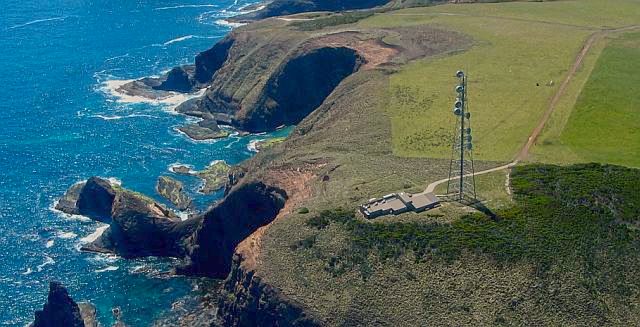Business’s bottom line is now the favoured target of activists seeking to have an impact on our relentlessly-rising CO2 levels [24 March 2015 | Peter Boyer]
By the end of next year, for the first time in human history, the air everywhere will contain above 400 parts per million of carbon dioxide. It will stay above that level through our lives and beyond.
Tasmania’s Cape Grim was the last of the world’s three baseline stations to climb above the 400 ppm line. By mid-2015, says the CSIRO scientific team in charge, the fluctuating annual cycle of the Cape Grim record will remain above it indefinitely.
Air bubbles trapped in 800,000-year-old ice reveal that carbon dioxide over all that time never got higher than 280 ppm. Older proxy sources indicate a strong likelihood that today’s CO2 loading is higher than for millions of years, possibly 20 to 30 million years.
Carbon dioxide levels and temperature tend to move in tandem. Our leaders have declared they’ll do everything to limit warming to 2C above pre-industrial levels. At that point, Earth will be warmer at the surface than it’s been for over 10 million years.
We’re now on track to reach 5C or more of warming by the end of this century. If we manage that, the average surface temperature will be about what it was when dinosaurs roamed the Earth and the stable climate we’ve enjoyed since long before the dawn of civilisation will be gone.
Climate change should be the political issue of the century, and developing national and global policies to deal with it should be the most pressing task for any political leader, anywhere.
But just as relentless as the rise of carbon dioxide is the determination of leaders in Hobart, in Canberra and everywhere else, to avoid probing the effectiveness of our response. When it’s raised they’ll suggest that the matter is in hand, not something to be concerned about.
A few leaders including our own prime minister summarily dismiss climate change as a second-order issue, although most know that it’s a genuine threat. But the perceived political pain of acting seriously to reduce that threat is too much to bear.
Here’s one explanation: President Barak Obama told New York Times writer Thomas Friedman last year he tended not to “lead with the climate change issue” because people didn’t see it as an immediate problem like “whether you’ve got a job or if you can pay the bills”.
In the battle against political indifference, words have been the weapons of choice for US writer Bill McKibben, but in 2012 he decided that money was a more potent weapon. He began what would become a global campaign to starve fossil fuel companies of investment funds.
That “divestment” campaign is now beginning to bite. Around 200 investment funds, universities and other organisations in the US and many other countries including Australia have now announced they would sell their shares in fossil fuel interests, and the list is growing daily.
Last week the Australian Conservation Foundation, a strong supporter of McKibben, launched a campaign of its own to lift the lid on Australia’s biggest carbon polluters.
The Top 10 Polluters report is something of a departure for the ACF. While active in the debate about climate policy in Australia, it has not been inclined to confront companies about their track record on emissions. Now under its new president, former advertising executive Geoff Cousins, the gloves are off.
Cousins has built his activist reputation on successful campaigns against major companies seen to be acting against conservation values, notably Woodside Petroleum and the Tasmanian forestry company Gunns. They were big, but in scope and ambition this campaign could dwarf them all.
The 10 ACF-listed companies are responsible for a third of all Australian emissions. Just two energy companies, Melbourne-based Energy Australia and the Sydney company AGL, between them produce over 12 per cent of the national total.
The aim of the ACF campaign, Cousins told me last week, was “a people-and-community” approach, “reaching out to people to bring pressure to bear on government to change policy”. In his introduction to the report, Cousins wrote of the choices facing the federal government: “Will it continue listening only to the big polluters, or will it start listening to the needs of the people and future generations?”
No prizes for guessing the government response. And in the continuing silence the carbon dioxide budget, like Canberra’s financial deficit, just keeps growing and growing.
Tasmanians have a chance to discuss such matters in Hobart on 31 March at the first of a series of Climate Tasmania evening forums. Details in my next post.
The Wings of the Sun, a film about a sun-powered flight across America in 2013, will screen at 6.30 tonight at the Dechaineux Theatre, UTAS School of Art, Hunter Street, Hobart, in support of the current round-the-world flight of Solar Impulse 2.

